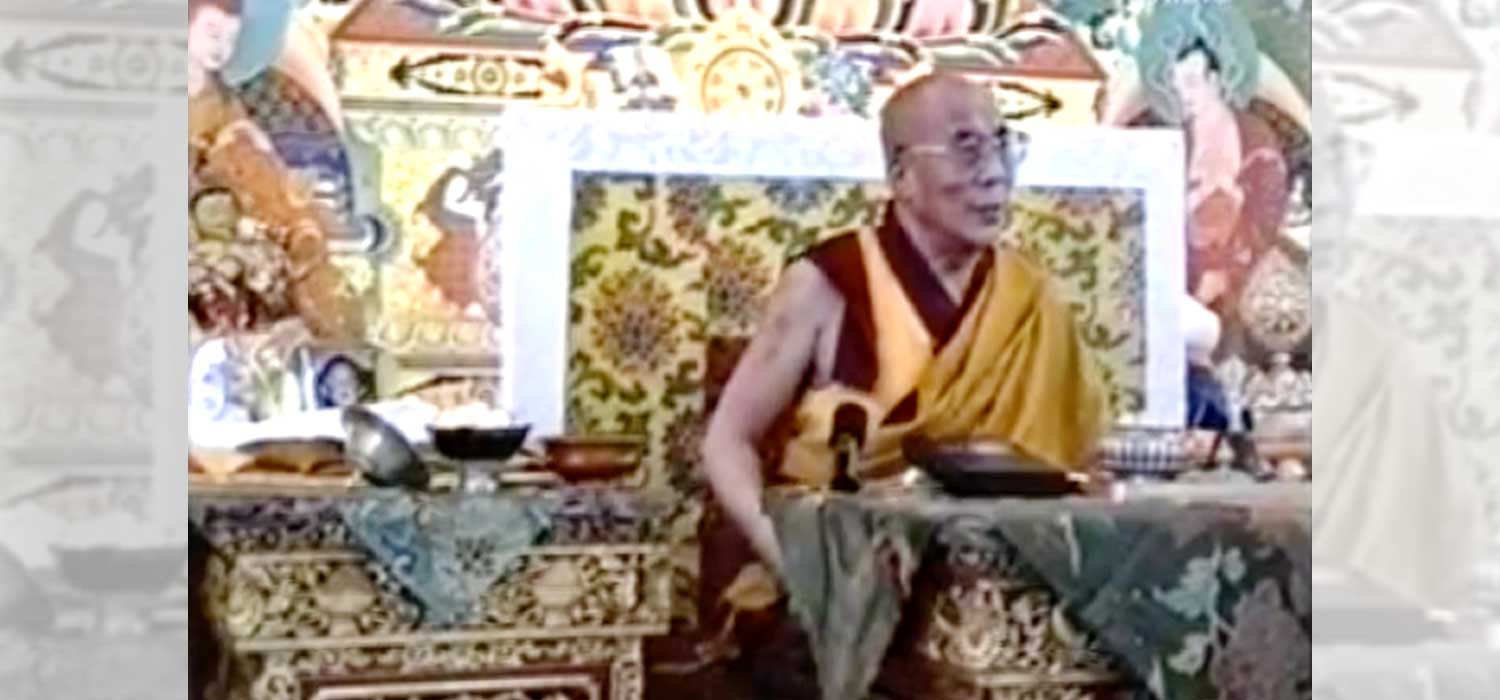
His Holiness the Dalai Lama announcing his recognition of the 11th Panchen Lama on May 14, 1995. A portrait of the Panchen Lama can be seen on the table beside him.
Yet another birthday of the 11th Panchen Lama, his 32nd, falls on April 25, 2021, and the world has as much information or as little as it had when he was abducted by the Chinese authorities in 1995, following his recognition by the Dalai Lama. In 1995 he became the youngest individual to have been placed under virtual detention, becoming known as the world’s youngest political prisoner.
Way back in August 2003, when asked about the Panchen Lama, who was 14 years old then and a minor, a spokesman of the Chinese Foreign Ministry said, “He is now in a good healthy condition, leading a normal and happy life,” adding, “He is not the incarnated soul boy.” In 2020, when the Panchen Lama was 31 years old, Chinese state media had the Chinese Foreign Ministry having a similar position, reporting, “this so-called ‘soul boy’ designated by Dalai Lama” is just an ordinary Chinese citizen living normally.” “Soul boy” is a mistranslation used by the Chinese authorities in English to refer to a reincarnated being.
So if the Chinese government considers the Panchen Lama “just an ordinary Chinese citizen,” today he is an adult and past his Age of Majority even under Chinese laws, and should be given all the rights, including to speak for himself. But the fact that the Chinese government continues to speak on his behalf shows that they have taken away his freedom of expression and that he is not “leading a normal and happy life.”
China not giving any credible information about the Panchen Lama’s whereabouts or status has even had several UN experts and working groups write formally to the Chinese government, expressing their concern and asking for an “independent monitor to visit him.”
This attitude by the Chinese authorities has even made some in the Tibetan Buddhist community ask questions about his fate. On his 31st birthday last April, the re-established Tashi Lhunpo monastery, the traditional seat of the Panchen Lama, now in south India, asked in a statement, “Due to this stonewalling of the truth for such a long time, today it is a pertinent question whether the Panchen Lama is still alive or not?” The monastery added that, “This is a matter of deep concern to the monks of the Tashi Lhunpo Monastery.” I have even heard some Buddhists, who fear the worst about the fate of the 11th Panchen Lama, opine that the followers might as well supplicate to His Holiness the Dalai Lama to start the process of finding his reincarnation. This is certainly thought-provoking. If there is no evidence of the Panchen Lama still living, it is an appropriate step, according to Tibetan Buddhist tradition, for his followers to make this request to the Dalai Lama.
But this blog post is about another aspect of the Panchen Lama, namely his name. The world knows of him as Gedhun Choekyi Nyima. It is a name that finds a place in the records of the United Nations as well as in parliaments and governments in many parts of the world. However, from a Tibetan Buddhist tradition perspective, that is no longer his formal name. Rather, his name is Tenzin Gedhun Yeshe Trinley Phuntsog Pel Sangpo, a mouthful, which had been bestowed on him by the Dalai Lama upon recognition in May 1995. Gedhun Choekyi Nyima is his non-monastic order name. Let me explain.
In the Tibetan Buddhist cultural tradition, an individual joins the monastery for spiritual pursuit, leaving behind the material concerns of the world. One of the first acts after an individual becomes a novice monk or nun is to get a new name from the spiritual master. One of the reasons for this is to symbolize the getting of a new identity, and non-attachment to the life before entering the spiritual path.
In the case of the Panchen Lama, it is the Dalai Lama who shoulders the responsibility for bringing him along the spiritual path. So, on May 14, 1995, when the Dalai Lama announced his recognition of the 11th Panchen Lama, his statement included the bestowal of a new name. In the statement, the Dalai Lama outlined the series of spiritual tests he had conducted, including divination, and all of them in unison pointed to the boy from “Lhari district in Nagchu, father Kunchok Phuntsok and mother Dechen Choedon, named Gedhun Choekyi Nyima” as being the unmistakable one. He was thus given the new name Tenzin Gedhun Yeshe Trinley Phuntsog Pel Sangpo. Had he been living freely and assuming his religious responsibility in Tashi Lhunpo, the 11th Panchen Lama would be known by this name rather than by Gedhun Choekyi Nyima.
In any case, in his address on May 14, 1995, in Dharamsala announcing the recognition of the 11th Panchen Lama, the Dalai Lama recalled the challenges that the 10th Panchen Lama had to go through and urged that “efforts must be made to ensure that the young incarnation has a long and successful life.” This is particularly relevant 26 years later when we are not even sure whether the Panchen Lama is alive or not.
